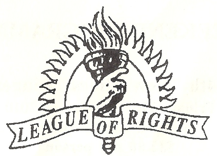Lilith: The Fabricated First Wife and Feminist Mirage! By Ms. Vera West
In recent decades, Lilith has become a potent icon of female rebellion. She is invoked as the original feminist: the woman who refused to lie beneath Adam, who demanded equality at the dawn of creation, and who chose exile and autonomy over submission and servitude. Artists, poets, and scholars have embraced her as a symbol of feminine resistance against patriarchal religion and cultural norms. And yet, for all the cultural energy poured into Lilith's reclamation, one uncomfortable truth remains: she never existed!
There is no Lilith in the Bible, not as Adam's first wife, not as a figure of equality, not as a woman at all. The only mention of the name "Lilith" in the entire Hebrew Bible comes in Isaiah 34:14, a haunting passage about desolation and ruin, in which night creatures and wild animals are said to inhabit a cursed land: "The wild beasts of the desert shall also meet with the wild beasts of the island, and the satyr shall cry to his fellow; the screech owl also shall rest there and find for herself a place of rest."
In this context, Lilith (or lilith in Hebrew) is rendered as a demon, a screech owl, or some nocturnal apparition, more a poetic flourish than a theological statement. She appears not as a person but as a metaphor for desolation, for spiritual and physical abandonment. It is thus appropriate for a demonic philosophy such as feminism!
The origin of Lilith as a personified figure comes much later and from a different tradition entirely. In Mesopotamian mythology, figures like Lilitu and Lilu emerge as dangerous spirits, female demons associated with storms, sexual deviance, and infant mortality. These were not liberatory figures; they were scapegoats for the inexplicable, embodiments of danger and chaos. It is from these ancient demonic archetypes that the Jewish folklore image of Lilith would eventually evolve, but only loosely and much later.
The story of Lilith as Adam's first wife, equal in creation, rebellious in spirit, and banished for her disobedience, originates not in scripture but in a satirical medieval Jewish text known as The Alphabet of Ben Sira. Dating from somewhere between the eighth and tenth centuries AD, this work is an odd mix of folklore, parody, and moral instruction. It is not authoritative rabbinic literature, nor was it taken seriously by most Jewish scholars. In it, Lilith refuses to lie beneath Adam, invoking their equal creation from the earth as justification for her demand. When Adam appeals to God, Lilith flees Eden and becomes a mother of demons. While this tale contains a few narrative hooks that modern readers find compelling, it was never part of Jewish orthodoxy or Christian theology. It was a fringe text, a curiosity rather than a canon.
The feminist revival of Lilith occurred centuries later. In the 20th century, particularly during the second wave of feminism, she was reimagined as a symbol of radical autonomy. What medieval rabbis feared in her, sexual freedom, independence, rebellion, modern feminists celebrated. She became a character in feminist retellings of Genesis, a subject of empowering art and literature, even the namesake of the "Lilith Fair," a touring festival of female musicians. In this version, Lilith is the woman who said "no" to patriarchy before patriarchy even had a name. The story resonates because it offers a powerful, mythic counter-narrative to Eve, the docile helpmate made from Adam's rib, blamed for the fall of man. In contrast, Lilith is the woman who refuses to be created for anyone but herself.
But this empowering version is, in the end, a fabrication. It is a myth built atop another myth, assembled from scraps of demonology, misunderstood scripture, and medieval satire. The fact that so many modern readers take Lilith seriously, as if she had always existed in the shadows of the Garden, suppressed by male scribes and church fathers, is testament not to her historical reality but to her symbolic utility. She is a cipher onto which modern anxieties and aspirations are projected. Her popularity speaks less to what ancient peoples believed and more to what modern feminists need her to be.
Of course, myth-making has its place. Symbols are powerful, and stories need not be literally true to serve cultural or emotional functions. But when symbols masquerade as suppressed history, when fabricated characters are passed off as lost truths, there is something disingenuous in the transaction. It replaces the hard, unflattering realities of tradition with comforting, invented subversions.
Lilith, in the end, is not a recovered heroine but a modern invention, a shadow conjured from the dark corners of apocrypha and legend, sculpted into a figure of defiance by those seeking new myths for new times. She is less a victim of patriarchal erasure than a product of feminist imagination. And while that may make her powerful in one sense, it also reveals the fragility of her claim to historical substance. Lilith is thus, one more feminist myth.


Comments